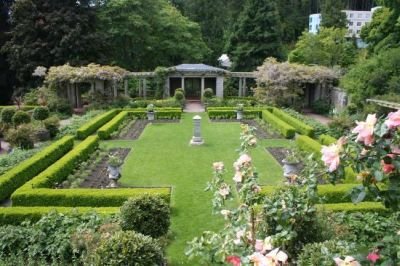The Facts About Hilton Head Landscapes Revealed
Table of ContentsGetting My Hilton Head Landscapes To WorkHilton Head Landscapes Fundamentals ExplainedAn Unbiased View of Hilton Head LandscapesFascination About Hilton Head LandscapesSome Ideas on Hilton Head Landscapes You Need To Know9 Easy Facts About Hilton Head Landscapes ShownHilton Head Landscapes - The Facts
Line develops all forms and patterns and can be used in a variety of ways in the landscape. Line in the landscape is developed by the edge between two materials, the synopsis or shape of a type, or a long direct function. Lines are a powerful device for the developer since they can be used to create a limitless range of forms and kinds, and they manage activity of the eye and the body.

Lines can have several qualities, such as those described below, however they normally offer various objectives. Number 1. Lines in the landscape - landscape design hilton head. The homes of lines establish exactly how people reply to the landscape, both psychologically and literally. Straight lines are architectural and strong; they produce an official personality, are generally related to a balanced layout, and lead the eye straight to a focal point.
Examine This Report about Hilton Head Landscapes
Straight lines are frequently found in hardscape sides and product. Rounded lines develop a casual, all-natural, loosened up character that is associated much more with nature and asymmetrical balance. Bent lines relocate the eye at a slower speed and add enigma to the area by producing covert sights. Vertical lines relocate the eye up, making a room feel bigger.
Upright lines in the landscape include tall, slim plant material, such as trees, or tall structures, such as an arbor or a bird home on a pole. Straight lines move the eye along the ground airplane and can make an area really feel bigger. Low lines are extra subdued and develop a sensation of rest or repose.
Some Known Details About Hilton Head Landscapes
Lines are additionally developed by the upright kinds of developed functions and plant material. There are 3 main line types that create form in the landscape: bedlines, hardscape lines, and plant lines.
Bedlines link plant product to the house and hardscape since the eye complies with the line, relocating the stare through the landscape. Hardscape lines are created by the side of the hardscape, which delineates the constructed structure. Line can also be developed by lengthy and slim materials, such as a fencing or wall.
The Ultimate Guide To Hilton Head Landscapes
Form is found in both hardscape and plants, and it is commonly the leading aesthetic aspect that spatially organizes the landscape and usually figures out the style of the yard. The kind of frameworks, plant beds, and yard ornaments also establishes the total type style of the garden. Official, geometric kinds include circles, squares, and polygons.
Plants produce kind in the garden through their lays out or silhouettes, yet kind can likewise be defined by a void or unfavorable area between plants - bluffton landscaping (https://h1tnhdlndscps.start.page). Circles can be complete circles, or they can be separated into half circles or circle sectors and combined with lines to develop arcs and tangents
Some Known Factual Statements About Hilton Head Landscapes
Circles can likewise be extended right into ovals and ellipses for even more range and interest. Circles are a strong design form because the eye is always attracted to the center, which can be utilized to stress a focal point or attach various other kinds. Number 2. Circular forms in hardscape and grass panels.
The square form can additionally be fractional and pre-owned repeatedly to produce a grid pattern. Unlike circles, squares are more powerful on the sides, which can be lined up or overlapped to create special patterns and even more complicated forms.
Twisting lines typically mimic the natural course of rivers or streams and can be referred to as smooth lines with deeply rounded undulations. Meandering lines (Number 3) work well for pathways, plant bedlines, and dry stream beds. Twisting lines can add passion and mystery to a garden by leading visitors around edges to find new views and spaces.
The Buzz on Hilton Head Landscapes

Number 5. Fragmented edges: stepping rocks in path. Kind is the most enduring top quality of a plant (bluffton landscaping). https://h1tnhdlndscps.weebly.com. Common plant forms are well developed and standard, as kind is the most consistent and identifiable feature of plants. Type can additionally be created with the massing of plants, where the total mass creates a different form than an individual plant.
A highly contrasting form needs to be utilized with careone or more job well as a centerpiece, yet way too many wreak havoc. All-natural plant additional reading kinds, as opposed to over-trimmed types, should establish the mass of the make-up. The significance of overall type is much more or much less reliant on the seeing perspectivethe type of a tree can show up rather various to an individual standing under the canopy versus checking out the tree from a distance in an open field.
What Does Hilton Head Landscapes Do?
Plant forms additionally produce and define deep space or open spaces between the plants, developing either convex or scooped types in deep spaces. High-arching tree branches generally produce a concave open area under the branches, and a round canopy with low branches fills the area to produce a convex kind in the open room under the tree.
